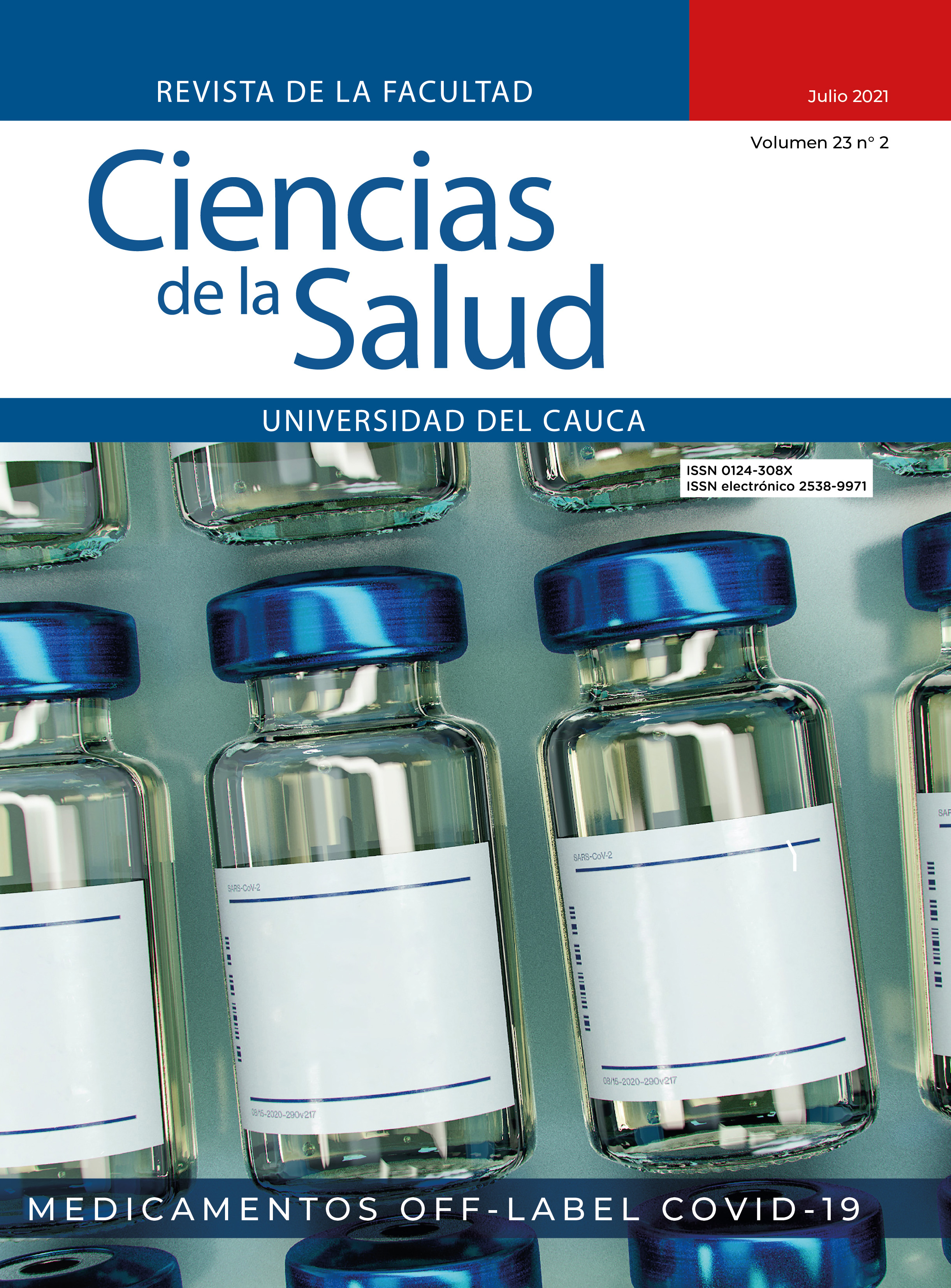Hyperammonemic encephalopathy due to valproic acid, without elevation of transaminases: Case Report
Abstract
Toxic encephalopathies can be caused by a wide variety of xenobiotics by direct and indirect mechanisms, simulating autoimmune or neoplastic metabolic diseases, therefore, they require an adequate anamnesis, a comprehensive physical examination and, in terms of toxicology, always try to find an epidemiological link.
Among the main causes are psychotropic drugs and drugs of abuse. The early recognition of a toxic encephalopathy is essential, understanding that it will lead to the withdrawal of noxa, initiation of management, reducing complications and associated mortality. We describe the case of a patient with valproic acid treatment who develops encephalopathy due to this anticonvulsant without compromising liver enzymes, the importance of this case is in recognizing valproic acid as a cause of encephalopathy.
Downloads
Disciplines:
Medicine, Chemistry Pharmaceutical, Regency of Pharmacy, Clinical Pharmacology, Clinical Toxicology, Neurology, Emergencies, Critical Care, Intensive Care, Pediatrics, NeuropediatricsReferences
Gummin DD, Mowry JB, Spyker DA, Brooks DE, Fraser MO, Banner W. 2016 Annual Report of the American Association of Poison Control Centers’ National Poison Data System (NPDS): 34th Annual Report. Clin Toxicol (Phila). 2017; 55(10):1072-1252. Doi: 10.1080/15563650.2017.1388087
Estrada AF, Berrouet MC, Zuluaga M, Ortiz A. Epidemiología de las intoxicaciones agudas en los servicios de urgencias hospitalarias. Medellín, Colombia. Rev. Toxicol. 2018; 35: 9-123.
Berrouet MC, Zuluaga M, Estrada AF, Diaz J, Gonzalez S. Utilidad de la hemodiálisis en intoxicación por anticonvulsivantes: reporte de dos casos. Rev. Toxicol. 2019; 36:138-141
Peña A LM, Arroyave H CL, Aristizábal H JJ, Gómez C UE. Fundamentos de medicina: Toxicología clínica. Cap. 29. Intoxicación por anticonvulsivantes: Carbamazepina, Fenitoína, Ácido valproico. 1.ª ed. Medellín: Corporación para Investigaciones Biológicas; 2010.
Goodman L, Gilman A. The pharmacological basis of therapeutics. McGraw Hill Publishing Co. Inc. New York, 2012,12th edition, 591-593.
Kostrouchová M, Kostrouch Z, Kostrouchová M. Valproic acid, a molecular lead to multiple regulatory pathways. Folia Biol (Praha). 2007; 53(2):37-49.
Sztajnkrycer MD. Valproic acid toxicity: overview and management. J Toxicol Clin Toxicol. 2002; 40(6):789-801. Doi: 10.1081/clt-120014645
Kearney, Thomas E. Chapter 153. Valproic Acid. Poisoning & Drug Overdose, 6e Ed. Kent R. Olson. McGraw Hill, 2012, Disponible en: https://accessmedicine.mhmedical.com/content.aspx?bookid=391§ionid=42069967.
Berrouet MC, Chica V. Anticonvulsivantes. En: Guías para el manejo de emergencias toxicológicas. Ministerio de Protección Social. Organización Panamericana de la salud. Convenio 344 de 2016. Bogotá, junio 30 de 2017.
Cano A, Hernández O, González C, Amariles P. Encefalopatía hiperamonémica asociada a ácido valproico por posible sinergismo con fenobarbital y topiramato: comunicación de tres casos. Farmacia Hospitalaria. 2012; 36(5), 441-442. Doi: 10.1016/j.farma.20.09.005
Rao M. Neurological prinicples In. Goldfrank LR, Flomenbaum NE, Lewin NA, Howland MA, Hoffman RS, Nelson LS. Goldfrank’s Toxicologic Emergencies. McGrawHill 11th Edition. New York, 2017. Disponible en: https://accesspharmacy.mhmedical.com/book.aspx?bookID=2569
Edlow JA, Rabinstein A, Traub SJ, et al. Diagnosis of reversible causes of coma. Lancet. 2014; 384(9959):2064-76. Doi: 10.1016/S0140-6736(13)62184-4.
Berrouet MC, Pino-Ramos NE., Castro-Botero M., GómezCalzada UE. Alteración del estado de conciencia en el paciente intoxicado. Medicina UPB. 2017; 36(1):71-79. https://Doi.org/10.18566/medupb.v36n1.a09.
Rupasinghe J, Jasinarachchi M. Progressive encephalopathy with cerebral oedema and infarctions associated with valproate and diazepam overdose. J Clin Neurosci. 20; 18:710.
Rico-Mesa JS, Rico-Mesa MA, Berrouet MC. Ischemic stroke related to acute consumption of cocaine [Internet]. CES Med. 2017; 31(2):207-14. Disponible en: https://revistas.ces.edu.co:443/index.php/medicina/article/view/3879
Chicharro AV, de Marinis AJ, Kanner AM. The measurement of ammonia blood levels in patients taking valproic acid: looking for problems where they do not exist?. Epilepsy Behav. 2007; 11(3):361-6. Doi: 10.1016/j.yebeh.2007.06.015.
Carr Russell B, Shrewsbury K. Hyperammonemia due to valproic acid in the psychiatric setting. Am J Psychiatry. 2007; 164(7):1020-7. Doi: 10.1176/ajp.2007.164.7.1020.
Hamer HM, Knake S, Schomburg U, Rosenow F. Valproate induced hyperammonemic encephalopathy in the presence of topiramate. Neurology. 2000; 54(1):230-2. Doi: 10.1212/wnl.54.1.230.
Glatstein M, Bonifacio Rino P, de Pinho S, Scolnik D, Pivko-Levi D, Hoyte C. Levocarnitine for the Treatment of Valproic Acid-Induced Hyperammonemi Encephalopathy in Children: The Experience of a Large, Tertiary Care Pediatric Hospital and a Poison Center. Am J Ther. 2019; 26(3):344-349. Doi: 10.1097/MJT.0000000000000706.












.png)



